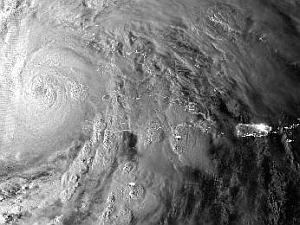A study by Lawrence Berkeley National Lab in California finds the global insurance industry is taking human-induced climate change seriously and undertaking a variety of actions to limit the impact of climate change on their companies’ finances. Environmental scientist Evan Mills describes his findings in this week’s issue of the journal Science (paid subscription required).
Mills catalogs the activities of the world’s insurance companies — with total revenues valued at $4.6 trillion, considered the world’s largest industry — from the early 1990s to 2012. He identifies 1,148 activities related to managing the risks of human-induced climate change by 378 insurance firms in 51 countries, representing $2 trillion, or 44 percent, of industry revenue.
These activities, says Mills, are evidence of increasing concerns about climate, stemming in large part from losses estimated at $50 billion a year due to weather and climate causes, losses that have doubled since 1980, when adjusted for inflation. “Insurers have become quite adept at quantifying and managing the risks of climate change,” says Mills, “and using their market presence to drive broader societal efforts at mitigation and adaptation.” The increasing level of activity, Mills found, is the result of shareholder and regulatory pressures, as well as market forces.
Among those efforts, the findings show 129 companies in 29 countries have tried to limit climate-related losses for their customers as well as reducing their own exposure to risk. The companies have supported climate research, developed climate-responsive products and services, and raised awareness of climate issues. Closer to home, these companies have reduced their in-house greenhouse gas emissions, quantified and disclosed climate risks, incorporated climate change into investment decisions, and tried to influence public policies.
Mills finds, the industry as a whole — which covers insurers, reinsurance companies, industry associations, brokers, catastrophe-loss modelers, and partners in the research community — applied sophisticated analytic tools to quantify and diversify their exposure to climate change risk, more accurately price and communicate risk, and get adaptation and loss-prevention efforts up and running. Their collaborations with scientists included projects such as harmonizing economics-based insurer catastrophe models with climate models.
Insurance companies, Mills reports, brought at least 130 products and services to market encouraging the spread of more energy-efficient homes and commercial buildings by paying claims that encourage rebuilding to a higher level of energy efficiency after a loss. At least 65 other insurance industry products address the risks and opportunities of the renewable energy industry.
Other innovations reported by Mills include pay-as-you-drive insurance policies, now numbering nearly 3 million, that offer auto insurance based on number of miles driven rather than a fixed premium, verified by GPS readings. Insurers also have policies that support financial shortfalls if projects underperform at delivering energy savings or low-emissions power generation, or manage the risks of carbon-trading transactions, such as wildfires releasing carbon sequestered in forests.
The climate-inspired innovations extend as well to policies designed for the developing world. An example is microinsurance policies that offer modest coverage in health, property, and life insurance for small premiums, following pilot programs started by governments and not-for-profit organizations. The commercial products were helped along by integrating actuarial and environmental sciences into insurance models.
Read more:
- Current Rice Cultivation Techniques Adding Greenhouse Gases
- Arcadia Biosciences to Develop Heat Tolerant Wheat
- Interactive Time-Lapse Landsat Images Now Available
- Grant to Fund New Drought-Resistant Biofuel Grasses
- International Consortium Studies Corn Genome
* * *


 RSS - Posts
RSS - Posts
[…] Study: Insurance Industry Adjusting to Climate Change […]
[…] Study: Insurance Industry Adjusting to Climate Change […]